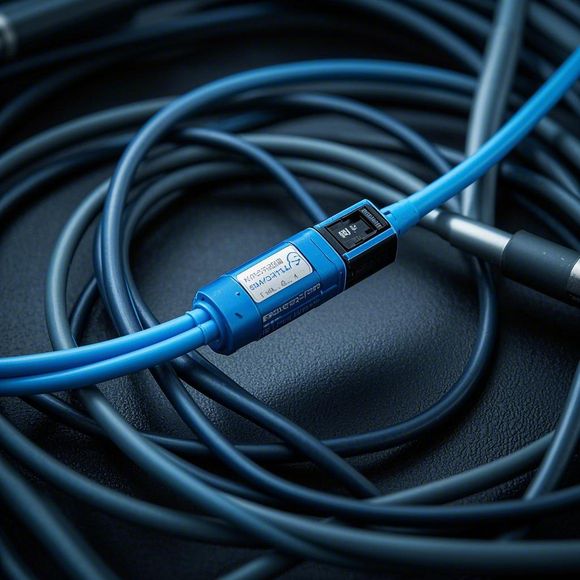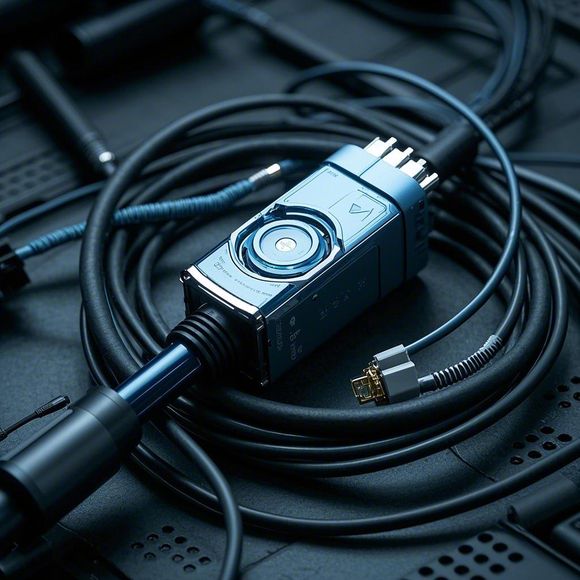The Future of Security: Embracing the Convergence of Analog and Digital in the Age of IoT
In the not-so-distant future, our world will be more connected than ever before, thanks to the Internet of Things (IoT). This network of devices, from smartphones to smart homes, will revolutionize the way we live, work, and play. But with this connectivity comes a new set of security challenges. As we move into this era, it's crucial to understand how to balance the analog and digital worlds to ensure our safety and privacy.The future of security lies in embracing the convergence of these two realms. We must learn to protect both our physical and digital spaces, as they become increasingly intertwined. This means rethinking our approach to security, from traditional locks and alarms to advanced cybersecurity measures. It's about creating a holistic system that can adapt to the ever-changing threat landscape of the IoT age.One key aspect of this convergence is the integration of IoT devices into our homes and businesses. These devices can collect vast amounts of data, which, if not properly secured, could lead to serious privacy breaches. Manufacturers and consumers alike need to prioritize security from the design phase, ensuring that devices are equipped with robust encryption and regular software updates.Moreover, as our homes become smarter, we must also consider the security of our personal data. From smart thermostats to voice assistants, these devices are constantly collecting information about our habits and preferences. It's essential that we have control over who has access to this data and how it's used.In the world of work, the IoT is transforming industries, from manufacturing to healthcare. However, this also means that critical infrastructure and sensitive patient information are at risk. Companies and organizations need to invest in comprehensive security strategies that cover both physical and digital aspects of their operations.Finally, as we embrace the future of security, it's important to remember that human beings are still the weakest link in any security system. Educating ourselves and staying vigilant against potential threats is crucial. Whether it's recognizing a phishing email or changing a weak password, our actions play a significant role in keeping ourselves and our data safe.In conclusion, the future of security is about embracing the convergence of analog and digital, ensuring that our homes, businesses, and personal data are protected in the age of IoT. It's a challenge that requires innovation, collaboration, and a commitment to staying one step ahead of the hackers and cybercriminals who seek to exploit our vulnerabilities.
Hey there, fellow security enthusiasts! Today, I'm pumped to talk about the exciting intersection of security, technology, and innovation. We're living in a time where the Internet of Things (IoT) is revolutionizing the way we protect our homes, businesses, and communities. And at the heart of this transformation is the convergence of analog and digital technologies in the realm of security.
So, let's dive in and explore how this convergence is shaping the future of security, and how we can leverage it to create smarter, more efficient, and downright awesome security solutions.
First off, let's define our terms. Analog security systems, for those who might not be familiar, are the OG's of the game. They rely on traditional methods like CCTV cameras and VCRs to capture and record footage. Digital security systems, on the other hand, use digital cameras and recorders to store footage in a digital format.
Now, here's the kicker: IoT is bringing these two worlds together in a way that's not just cool, but downright game-changing. With IoT, we're not just talking about cameras and DVRs anymore; we're talking about networks of connected devices that can communicate with each other and with us, providing real-time data and insights that were once the stuff of science fiction.

Imagine a world where your security system not only detects an intruder but also automatically notifies the authorities, adjusts lighting, and locks down access points, all while you're sipping your morning coffee from the other side of the world. That's the power of IoT in action!
But it's not just about convenience; it's about effectiveness too. By integrating analog and digital systems, we can enjoy the best of both worlds. The reliability and affordability of analog technology combined with the flexibility and intelligence of digital systems are creating a new standard in security.
Take, for example, the use of AI and machine learning in security cameras. These digital tools can analyze footage in real-time, identifying potential threats and responding faster than any human could. But when you pair them with the wide-coverage and long-lasting power sources of analog cameras, you've got a setup that's both smart and robust.
Moreover, the integration of IoT into security systems is making them more accessible and user-friendly. With mobile apps and intuitive interfaces, you can monitor your security from anywhere, at any time. It's like having your very own James Bond-style security lair, but in the palm of your hand.
Of course, with great power comes great responsibility. As we embrace this new era of security, we must also ensure that our systems are secure from cyber threats. That's why it's crucial to work with reputable vendors who prioritize cybersecurity and regular system updates.
In conclusion, the future of security is bright, and it's being built on the foundation of the analog-digital convergence in the IoT era. By embracing this technology, we're not just enhancing our security; we're redefining it. So, let's continue to push the boundaries, innovate, and create a safer world for us all.

Stay secure, stay smart, and as always, keep an eye out for the next big thing in security tech!
Content expansion reading:
As a seasoned trader, I am well-aware of the significance of security in our global economy. The world has become more connected than ever before, and this interconnectedness brings with it both opportunities and challenges. One of the most critical aspects of trade is the need for reliable and efficient safety systems that protect both individuals and businesses from potential risks and disruptions. This is where integrated security and safety solutions come into play.
Integrated security and safety solutions encompass a wide range of technologies, methods, and practices designed to safeguard both physical infrastructure and digital assets against various forms of threats and attacks. These include but are not limited to firewalls, antivirus software, data encryption, network monitoring, and cybersecurity policies and procedures. By combining these tools and techniques, organizations can create an integrated security framework that offers robust protection against a variety of potential hazards.
One of the key advantages of integrating security measures into your trade operations is increased efficiency and cost savings. With a single, centralized system in place, you can manage multiple security protocols efficiently without the need for siloed approaches. This streamlined approach reduces redundancy, minimizes errors, and enhances overall security posture. Moreover, by leveraging advanced analytics and predictive analytics, you can anticipate and mitigate potential threats before they materialize, thereby reducing the likelihood of breaches and other security incidents.
Another critical aspect of integrated security and safety solutions is their role in promoting trust among stakeholders. When businesses operate under a secure environment, customers, partners, and suppliers feel more confident in doing business with them. This confidence translates into increased sales, better relationships, and higher customer retention rates. In addition, having robust security measures in place can help protect intellectual property, proprietary information, and sensitive data, ensuring that your organization maintains its competitive edge in the marketplace.

To effectively implement an integrated security and safety solution, it's important to have a comprehensive plan in place. This plan should include a thorough assessment of the current security landscape, identifying vulnerabilities and gaps. It should also outline the specific security requirements and goals for each department or area within your organization. Once these elements are identified, you can develop a customized security strategy that incorporates the latest technology and best practices. This strategy should be continually reviewed and updated as new security threats emerge and evolving threats become apparent.
In addition to technical measures, it's crucial to invest in people skills and training. Security is a complex field that requires expertise in various areas such as threat intelligence analysis, penetration testing, and incident response planning. Ensuring that all employees understand the importance of security measures and how to effectively apply them is essential. This can be achieved through regular training programs, workshops, and other educational opportunities designed to enhance employee awareness and preparedness.
Finally, effective communication is key to maintaining compliance and fostering an open culture. Organizations must communicate regularly with their stakeholders about security issues, risks, and potential impacts on business operations. This can be accomplished through regular meetings, newsletters, and other channels that ensure everyone is informed and engaged. Additionally, addressing concerns promptly and transparently can help build trust and prevent any negative perceptions or mistrust among stakeholders.
In conclusion, integrated security and safety solutions are vital for any global trade operation. These solutions provide a comprehensive approach to protecting both physical and digital assets, enhance efficiency, reduce costs, promote trust, and ultimately drive long-term success. As a trader, it's essential to stay abreast of the latest trends, technologies, and best practices in the field of security and safety. By adopting an integrated approach to security measures, you can ensure that your organization remains secure and resilient in today's rapidly changing global market.
Articles related to the knowledge points of this article:
Title: The Difference between Telecommunication Cable and Communication Cable
The Diameter of Communication Cables
Title: 20-gauge Communication Cable: Properties, Uses, and Advantages
The Selling Prices of Communication Cables in Fujian
Guangxi Explosion-proof Communication Cable: The Backbone of Communication Infrastructure in Guangxi